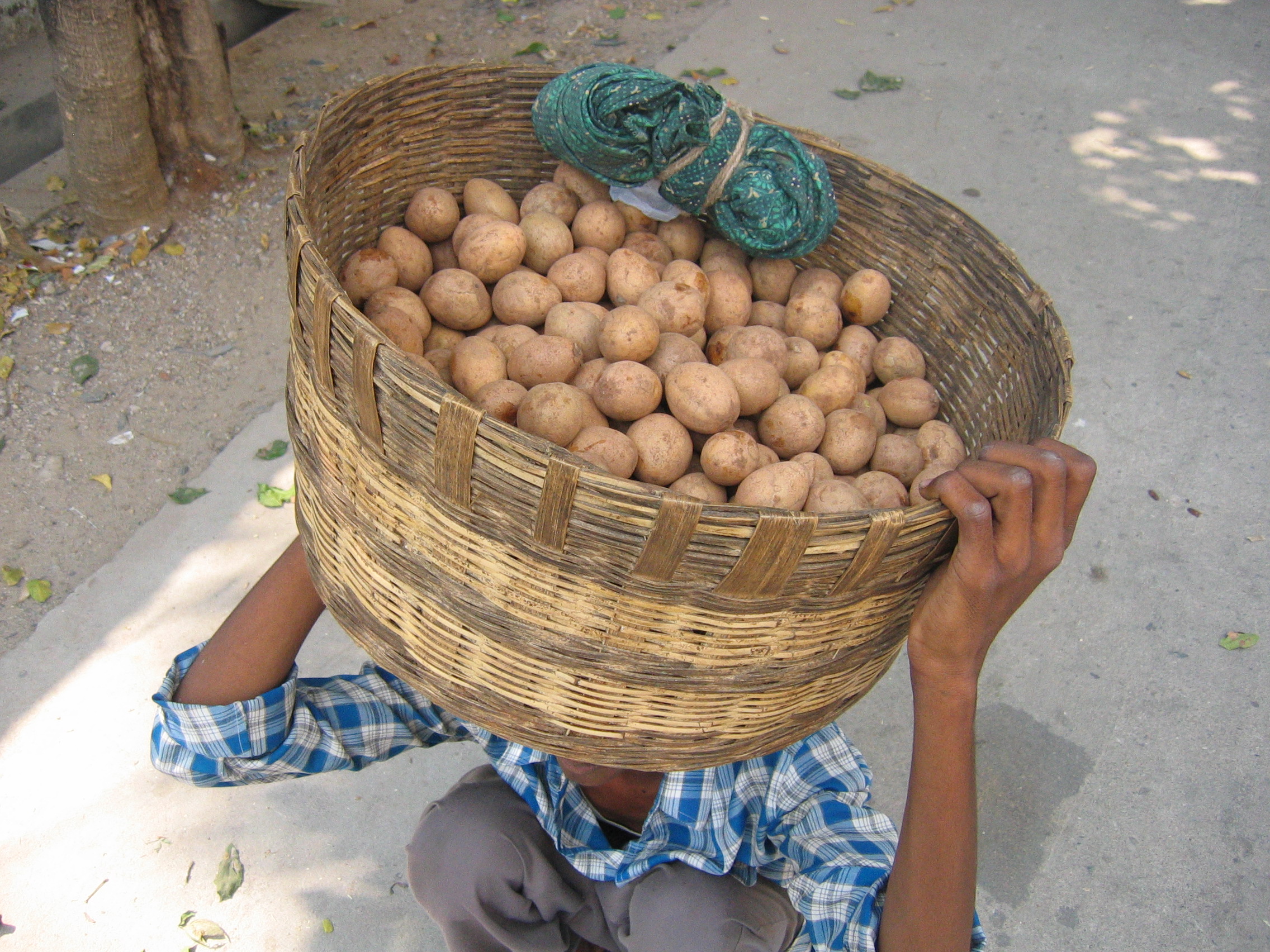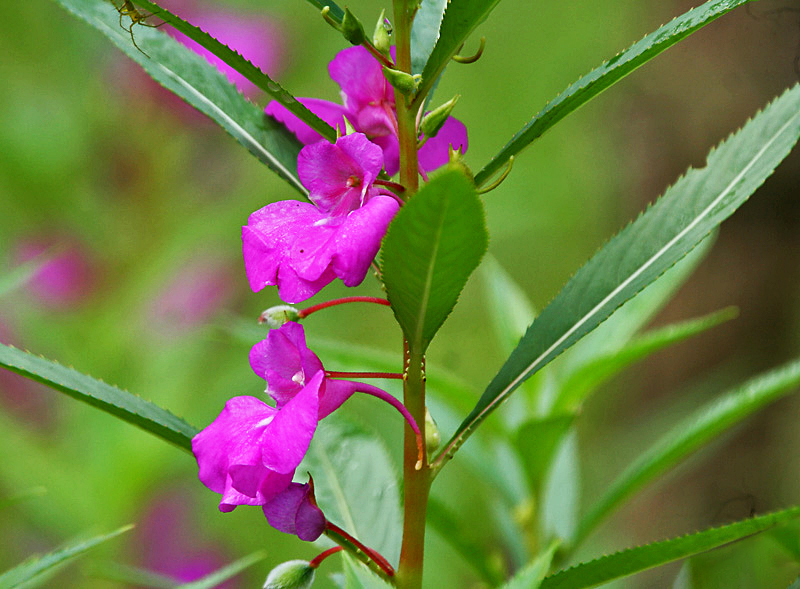|
Sapotaceae
240px, '' Madhuca longifolia'' var. ''latifolia'' in Narsapur, Medak district, India The Sapotaceae are a family of flowering plants belonging to the order (biology)">order Ericales">family (biology)">family of flowering plants belonging to the order (biology)">order Ericales. The family includes about 800 species of evergreen trees and Shrub, shrubs in around 65 genera (35–75, depending on generic definition). Their distribution is Tropics, pantropical. Many species produce edible fruits, or white blood-sap that is used to cleanse dirt, organically and manually, while others have other economic uses. Species noted for their edible fruits include '' Manilkara'' ( sapodilla), '' Chrysophyllum cainito'' (star-apple or golden leaf tree), '' Gambeya africana'' and '' Gambeya albida'' (star-apple), and '' Pouteria'' ('' abiu, canistel, lúcuma'', mamey sapote). '' Vitellaria paradoxa'' (''shi'' in several languages of West Africa and ''karité'' in French; also anglicized as s ... [...More Info...] [...Related Items...] OR: [Wikipedia] [Google] [Baidu] |
Chrysophylloideae
Chrysophylloideae is a subfamily of flowering plants in the chicle family, Sapotaceae. Genera Genera accepted by the Germplasm Resources Information Network as of December 2022: * '' Achrouteria'' Eyma * '' Amorphospermum'' F.Muell. * '' Aubregrinia'' Heine * '' Beccariella'' Pierre * '' Breviea'' Aubrév. & Pellegr. * '' Chromolucuma'' Ducke * '' Chrysophyllum'' L. * '' Cornuella'' Pierre * '' Delpydora'' Pierre * '' Diploon'' Cronquist * '' Donella'' Pierre ex Baill. * '' Ecclinusa'' Mart. * '' Elaeoluma'' Baill. * '' Englerophytum'' K.Krause * '' Gambeya'' Pierre * '' Leptostylis'' Benth. * '' Lucuma'' Molina * '' Magodendron'' Vink * '' Martiusella'' Pierre * ''Micropholis ''Micropholis'' is genus of trees in the family ''Sapotaceae'', described in 1891. (2001): World Checklist of Sapotaceae &ndash''Micropholis'' The Board of Trustees of the Royal Botanic Gardens, Kew. Retrieved 2008-DEC-24. These trees are nativ ...'' (Griseb.) Pierre * '' Nemaluma'' Baill. * '' N ... [...More Info...] [...Related Items...] OR: [Wikipedia] [Google] [Baidu] |
Manilkara
''Manilkara'' is a genus of trees in the family Sapotaceae. They are widespread in tropical and semitropical locations, in Africa, Madagascar, Asia, Australia, and Latin America, as well as various islands in the Pacific and in the Caribbean. A close relative is the genus '' Pouteria''. Trees of this genus yield edible fruit, useful wood, and latex. The best-known species are '' M. bidentata'' (''balatá''), '' M. chicle'' (chicle) and '' M. zapota'' (sapodilla). ''M. hexandra'' is the floral emblem of Prachuap Khiri Khan Province in Thailand, where it is known as ''rayan''. ''M. obovata'' shares the vernacular name of African pear with another completely different species, '' Dacryodes edulis'', and neither should be confused with '' Baillonella toxisperma'', known by the very similar name, African pearwood. ''Manilkara'' trees are often significant, or even dominant species in their native ecosystems, such as East Deccan dry evergreen forests, Central Americ ... [...More Info...] [...Related Items...] OR: [Wikipedia] [Google] [Baidu] |
Palaquium
''Palaquium'' is a genus of about 120 species of trees in the family Sapotaceae. Their range is from India across Southeast Asia, Malesia, Papuasia, and Australasia, to the western Pacific Islands. Description Within their range, ''Palaquium'' species are mostly found in the Philippines and Borneo. In Borneo, many species are recorded in the Malaysian states of Sabah and Sarawak. The leaves are typically spirally arranged and often clustered near twig ends. Flowers are mostly bisexual, though some unisexual instances are known. Fruits are one- or two-seeded with rare instances of several seeds. ''Palaquium'' habitats are coastal, lowland mixed dipterocarp, swamp, and montane forests. Some species, for example ''Palaquium gutta'', are well known for producing gutta-percha Gutta-percha is a tree of the genus ''Palaquium'' in the family Sapotaceae, which is primarily used to create a high-quality latex of the same name. The material is rigid, naturally biologically Chemically i ... [...More Info...] [...Related Items...] OR: [Wikipedia] [Google] [Baidu] |
Manilkara Zapota
''Manilkara zapota'', commonly known as sapodilla (), sapote, chicozapote, chicoo, chicle, naseberry, nispero, or soapapple, among other names, is an evergreen tree native to southern Mexico and Central America. An example natural occurrence is in coastal Yucatán, in the Petenes mangroves ecoregion, where it is a subdominant plant species. It was introduced to the Philippines during Spanish colonization. It is grown in large quantities in Mexico and in tropical Asia, including India, Pakistan, Thailand, Malaysia, Cambodia, Indonesia, Vietnam, Bangladesh, as well as in the Caribbean. Common names Most of the common names of ''Manilkara zapota'' like "sapodilla", "chiku", and "chicozapote" come from Spanish meaning "little sapote". Other common names in English include bully tree, soapapple tree, sawo, marmalade plum and dilly tree. The specific epithet ''zapota'' is from the Spanish , which ultimately derives from the Nahuatl word '' tzapotl'' used for other similar lookin ... [...More Info...] [...Related Items...] OR: [Wikipedia] [Google] [Baidu] |
Ericales
The Ericales are a large and diverse order of flowering plants in the asterid group of the eudicots. Well-known and economically important members of this order include tea and ornamental camellias, persimmon, ebony, blueberry, cranberry, lingonberry, huckleberry, kiwifruit, Brazil nut, argan, sapote, azaleas and rhododendrons, heather, heath, impatiens, phlox, Jacob's ladder, primroses, cyclamens, shea, sapodilla, pouterias, and trumpet pitchers. The order includes 22 families, according to the APG IV system of classification. The Ericales include trees, bushes, lianas, and herbaceous plants. Together with ordinary autophytic plants, they include chlorophyll-deficient mycoheterotrophic plants (e.g., '' Sarcodes sanguinea'') and carnivorous plants (e.g., genus '' Sarracenia''). Mycorrhizal associations are quite common among the order representatives, and three kinds of mycorrhiza are found exclusively among Ericales (namely, ericoid, arbutoid and monotro ... [...More Info...] [...Related Items...] OR: [Wikipedia] [Google] [Baidu] |
Sapotoideae
The Sapotoideae are a subfamily of the flowering plant family Sapotaceae. Plants in the subfamily are characterized by their leather-like leaves, often growing in a stipule fashion. The seeds of the tree ''Argania spinosa'' produce an edible oil, traditionally harvested in Morocco. Genera Genera accepted by the Germplasm Resources Information Network as of December 2022: * ''Argania'' Roem. & Schult. * '' Autranella'' A.Chev. * '' Baillonella'' Pierre * '' Bemangidia'' L.Gaut. * '' Burckella'' Pierre * '' Capurodendron'' Aubrév. * '' Diploknema'' Pierre * '' Faucherea'' Lecomte * ''Gluema'' Aubrév. & Pellegr. * '' Inhambanella'' (Engl.) Dubard * '' Isonandra'' Wight * '' Labourdonnaisia'' Bojer * ''Labramia'' A.DC. * ''Lecomtedoxa'' (Pierre ex Engl.) Dubard * '' Letestua'' Lecomte * ''Madhuca'' Ham. ex J.F.Gmel. * ''Manilkara'' Adans. * ''Mimusops'' L. * '' Neohemsleya'' T.D.Penn. * '' Neolemonniera'' Heine * ''Nesoluma'' Baill. * '' Northia'' Hook.f. * ''Palaquium'' Blanco * ... [...More Info...] [...Related Items...] OR: [Wikipedia] [Google] [Baidu] |
Sarcospermatoideae
''Sarcosperma'' is a genus of trees or shrubs in the family Sapotaceae. Their range is from India to southern China and Malesia Malesia is a biogeographical region straddling the Equator and the boundaries of the Indomalayan and Australasian realms. It is a phytogeographical floristic region in the Paleotropical kingdom. It was first recognized as a distinct region .... Description The leaves are well-spaced along twigs. Flowers are bisexual, with a funnel-shaped corolla. Fruits are one or two-seeded. ''Sarcosperma'' habitats are forests from sea-level to about elevation. Species ;Accepted species References Sapotaceae genera Flora of the Indomalayan realm Taxa described in 1876 Taxa named by Joseph Dalton Hooker {{Sapotaceae-stub ... [...More Info...] [...Related Items...] OR: [Wikipedia] [Google] [Baidu] |
Pouteria
''Pouteria'' is a genus of flowering plant, flowering trees in the gutta-percha family (biology), family, Sapotaceae. The genus is widespread throughout the tropical Americas, with outlier species in Cameroon and Malesia. It includes the canistel (''Pouteria campechiana, P. campechiana''), the mamey sapote (''Mamey sapote, P. sapota''), and the lucuma (''Lucuma, P. lucuma''). Commonly, this genus is known as pouteria trees, or in some cases, eggfruits. ''Pouteria'' is related to ''Manilkara'', another genus that produces hard and heavy woods (e.g. ''balatá'', ''M. bidentata'') used commonly for tropical construction, as well as edible fruit (such as sapodilla, ''M. zapota''). Range ''Pouteria'', as currently delineated, has over 200 species in the tropical Americas, from Mexico to northern Argentina and central Chile, including Florida and the Caribbean islands. Four species are found outside the Americas. ''Pouteria hexastemon'' is native to Cameroon in west-central Africa, and ... [...More Info...] [...Related Items...] OR: [Wikipedia] [Google] [Baidu] |
Madhuca Longifolia Var Latifolia (Mahua) W IMG 0242
''Madhuca'' is a genus of plants in the family Sapotaceae first described as a genus in 1791.Govaerts, R., Frodin, D.G. & Pennington, D. (2001 publ. 2002). World Checklist and Bibliography of Sapotaceae: 1-364. The Board of Trustees of the Royal Botanic Gardens, Kew. ''Madhuca'' is native to south, east, and southeast Asia and Papuasia (from India to China to New Guinea). Species ''Plants of the World Online'' currently lists more than 110 species: * ''Madhuca alpina'' (A.Chev. ex Lecomte) A.Chev. * '' Madhuca aristulata'' (King & Gamble) H.J.Lam * ''Madhuca aspera'' H.J.Lam * ''Madhuca barbata'' T.D.Penn. * ''Madhuca bejaudii'' Aubrév. * ''Madhuca betis'' (Blanco) J.F.Macbr. * ''Madhuca boerlageana'' (Burck) Baehni * ''Madhuca borneensis'' P.Royen * ''Madhuca bourdillonii'' (Gamble) H.J.Lam * ''Madhuca brochidodroma'' T.D.Penn. * ''Madhuca burckiana'' (Koord.) H.J.Lam * ''Madhuca butyrospermoides'' A.Chev. * ''Madhuca calcicola'' P.Royen * ''Madhuca chai-ananii'' Chantar. * ... [...More Info...] [...Related Items...] OR: [Wikipedia] [Google] [Baidu] |
Lúcuma
''Lucuma bifera'' (synonym ''Pouteria lucuma'') is a species of tree in the family Sapotaceae, cultivated for its fruit, the lúcuma. It is native to the Andean valleys of Colombia, Ecuador, Peru, Bolivia, and northern Chile. Description This evergreen tree is up to 20 m tall, and has greyish-brown, fissured bark, which produces a milky white exudate. The end of branchlets and the petioles are covered with short, brown hairs. The leaves are simple, oblanceolate to elliptical, up to 25 cm long and 10 cm wide, and glabrous (or sometimes slightly hairy on the underside) grouped at the end of the branches. Flowers are solitary or in fascicles, small, axillary, with hairy sepals and a corolla forming a tube 1.0-1.8 cm long, greenish white, with five lobes, five stamens, five staminodes, a pubescent ovary, and a style 0.8-1.5 cm long. The fruit is globose, 6–12 cm long, glabrous, and russet to yellow when mature; the pulp is bright yellow; the one to seve ... [...More Info...] [...Related Items...] OR: [Wikipedia] [Google] [Baidu] |
Vitellaria
''Vitellaria paradoxa'' (formerly ''Butyrospermum parkii''), commonly known as shea tree, shi tree (, also ), or vitellaria, is a tree of the family Sapotaceae. It is the only species in the genus ''Vitellaria'',''Vitellaria paradoxa''. AgroForestry Tree Database. World Agroforestry Centre. and is indigenous to Africa. The shea fruit consists of a thin, tart, nutritious pulp that surrounds a relatively large, oil-rich seed from which shea butter is extracted. It is a deciduous tree usually tall, but has reached and a trunk diameter of . The shea tree is a traditional African food plant. It has been said to have potential to improve nutrition, boost food supply in the "annual hungry season", foster rural development, and support sustainable land care. Description< ...
|



